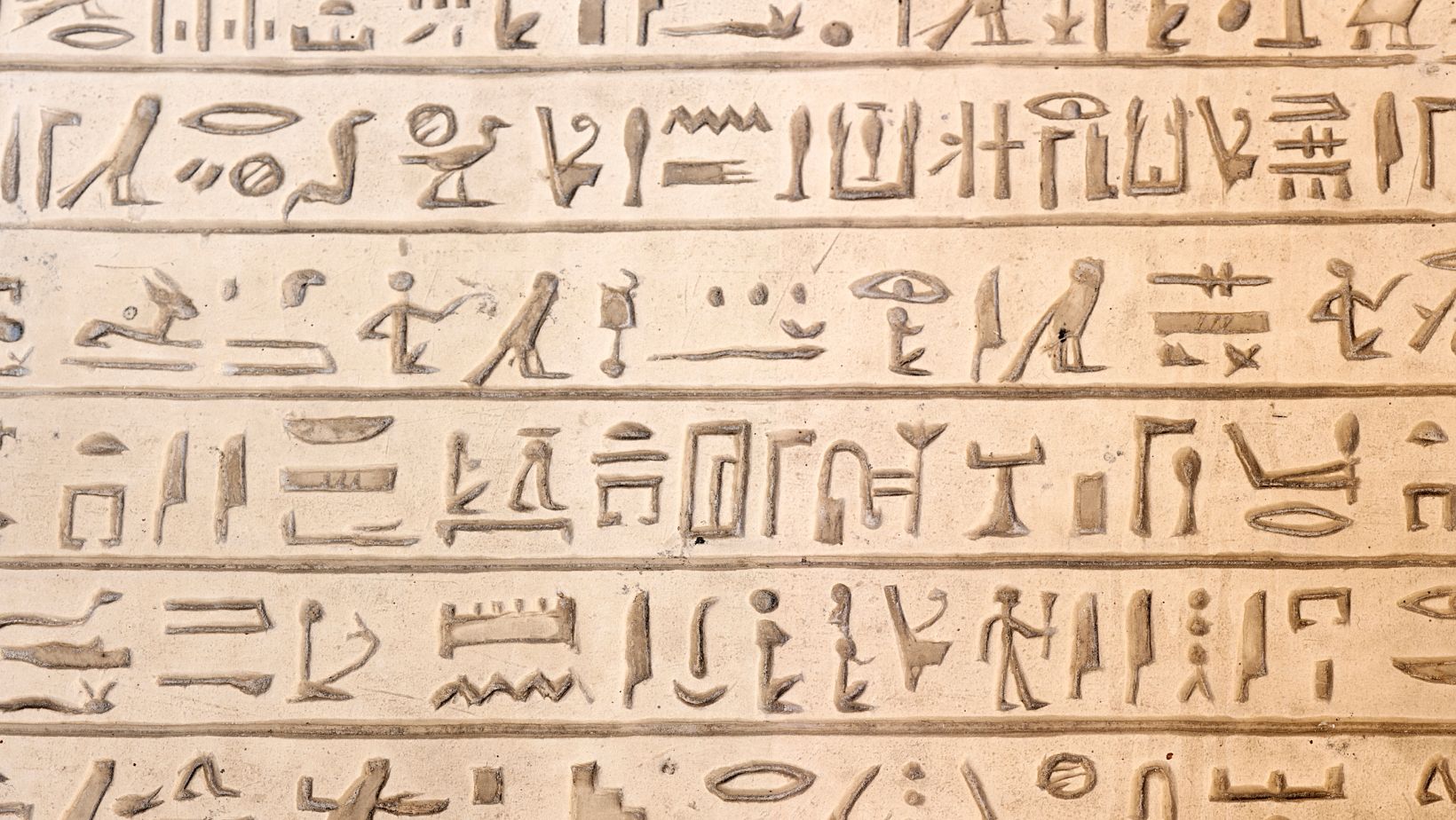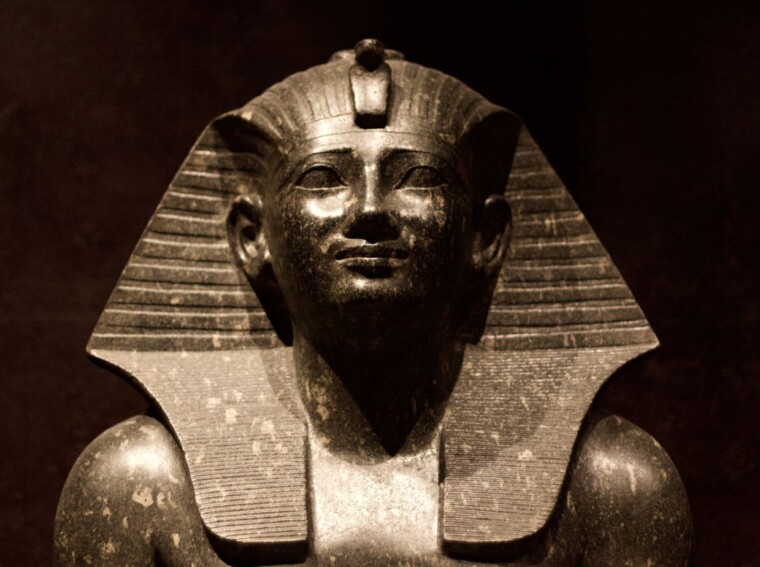Name The Egyptian Sculpture Above. Describe The Symbolism of Its Different Parts.
The iconic Egyptian sculpture that I am about to discuss in this article is known as the Great Sphinx of Giza. This colossal statue is believed to have been built during the reign of the pharaoh Khafre in the Old Kingdom of Egypt, around 2500 BC. Standing at a height of 66 feet and measuring 240 feet in length, the Great Sphinx is a remarkable testament to the ancient Egyptian civilization’s architectural and artistic prowess.
The Great Sphinx of Giza is an enigmatic masterpiece that has captured the fascination of people around the world for centuries. Carved out of a single limestone block, this monumental sculpture depicts a creature with the body of a lion and the head of a human, believed to represent the pharaoh Khafre himself. The Sphinx is situated on the Giza Plateau, facing directly towards the rising sun, and is surrounded by other famous ancient Egyptian structures, such as the Great Pyramids.
The Most Famous Egyptian Sculptures
The Great Sphinx of Giza
The Great Sphinx of Giza, as mentioned earlier, is one of the most iconic Egyptian sculptures. With its lion body and human head, it holds deep symbolism in ancient Egyptian culture. The lion body represents strength, power, and protection, qualities associated with the pharaohs. Lions were considered royal animals, symbolizing authority and dominance. On the other hand, the human head of the Sphinx represents intelligence, wisdom, and divinity. It is believed to be a representation of pharaoh Khafre himself, connecting him to the divine realm. The combination of these two elements in the Great Sphinx reflects the ideal qualities that a pharaoh should possess. Positioned next to the Great Pyramid of Khafre, the Sphinx serves as a guardian and protector, emphasizing its role as a symbol of power and protection.
The Bust of Nefertiti
Another famous Egyptian sculpture is the Bust of Nefertiti. This exquisite piece is a portrayal of Queen Nefertiti, the wife of pharaoh Akhenaten. The bust showcases the remarkable artistic skills of ancient Egyptian sculptors. Nefertiti’s elegant and symmetrical features, with her elongated neck and serene expression, make her one of the most beautiful representations of female beauty in ancient art. The bust has become an iconic symbol of femininity, grace, and regal power in ancient Egypt.
The Golden Mask of Tutankhamun
The Golden Mask of Tutankhamun is another renowned Egyptian sculpture. This masterpiece was discovered in the tomb of the young pharaoh Tutankhamun and is made of solid gold. The mask depicts the face of the pharaoh, adorned with intricate details and precious gemstones. It symbolizes the divine status of the pharaoh and his journey into the afterlife. The mask is a stunning example of the craftsmanship and wealth of the ancient Egyptian civilization.

The Symbolism in Egyptian Sculpture
The Use of Hieroglyphics
In Egyptian sculpture, hieroglyphics played a significant role in conveying symbolism and telling stories. These intricate and mysterious symbols served as a written language, allowing the ancient Egyptians to communicate their beliefs, history, and mythology through their art. Hieroglyphics were often carved or painted onto sculptures, enabling them to serve as visual narratives. The use of hieroglyphics in Egyptian sculpture allowed for a deeper understanding of the symbolism and meaning behind these magnificent artworks.
The Depiction of Gods and Pharaohs
One of the most prominent aspects of Egyptian sculpture is the portrayal of gods and pharaohs. Gods were depicted with animal heads, representing their divine powers and unique characteristics. For example, the Great Sphinx of Giza, with its lion body and human head, symbolized the strength and intelligence associated with a pharaoh. Pharaohs, on the other hand, were depicted with a combination of human and animal features, showcasing their divine status and connection to the gods. These depictions emphasized the religious and political significance of the pharaoh, who was believed to be a direct link between the gods and the people.
The Symbolism of Different Parts
Each part of an Egyptian sculpture held its own symbolism. The head represented intelligence, wisdom, and divinity, while the body symbolized strength, power, and protection. The facial features, such as the eyes, conveyed a sense of eternal vigilance and watchfulness. The posture of the sculpture, whether standing or seated, conveyed different meanings. Standing sculptures represented the pharaoh’s authority and dominance, while seated sculptures portrayed a sense of stability and balance. Even the materials used, such as stone, gold, or precious gems, held symbolic value, reflecting the wealth and prestige of the subject.
Conclusion
Egyptian sculpture is a fascinating glimpse into the intricate symbolism and artistic prowess of ancient Egyptian civilization. These sculptures, adorned with hieroglyphics and depicting gods and pharaohs, served as powerful conduits for conveying the profound beliefs, values, and aspirations of the ancient Egyptians. Every element of these sculptures, from the intricately carved heads to the carefully selected materials, held its own symbolic significance, enriching the profound meaning behind these extraordinary artworks. By studying these sculptures, we gain deeper insights into the cultural, religious, and social aspects of ancient Egypt. From the grandeur of the pharaohs to the reverence for deities, Egyptian sculpture encapsulates the essence of a civilization that valued art as a means of immortalizing its beliefs and ideals.
